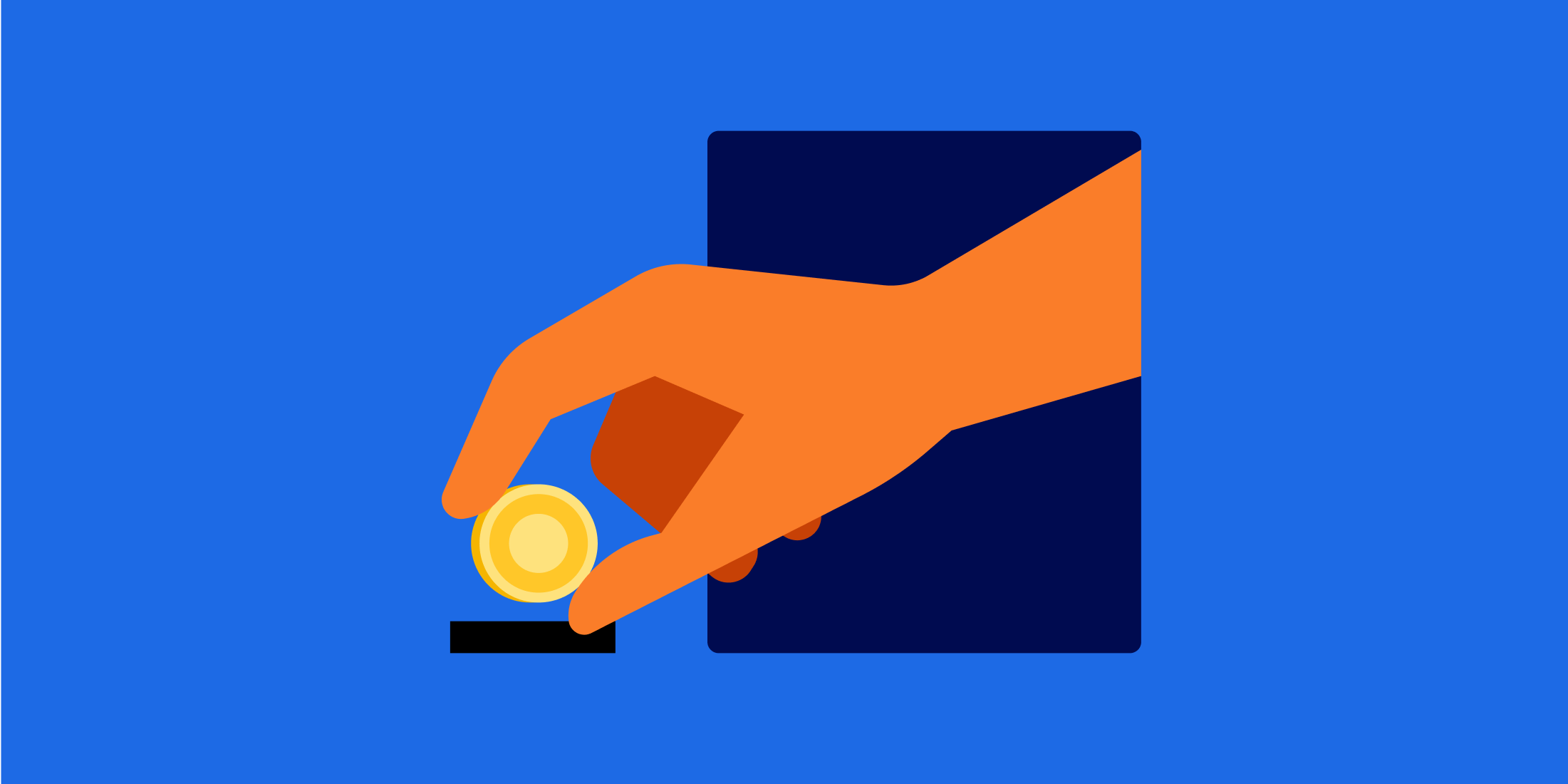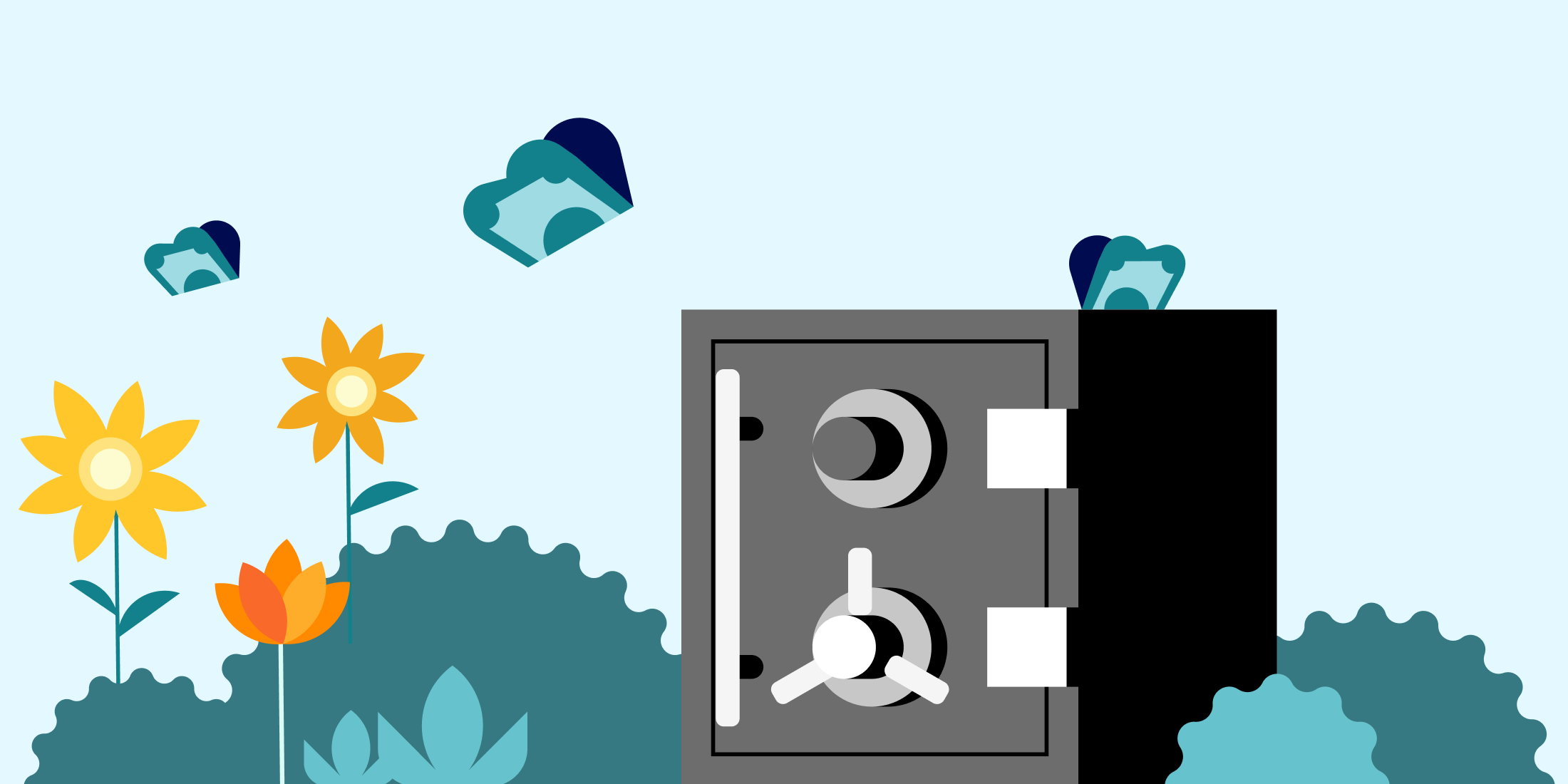Interest Rates

Featured articles
-
![]()
How much cash is too much cash to be in savings?
Cash is great. But can you have too much? And what should you do with it? Let’s find out.
How much cash is too much cash to be in savings? Cash is great. But can you have too much? And what should you do with it? Let’s find out. The main point: If you have too much cash in savings, you may be missing out on growth from stock or bond investments. Consider having cash in savings for short-term needs and putting the rest into investing accounts. Facts about cash in savings: Cash in savings is liquid, meaning it is easy to access when you need to withdraw it for spending. Cash in savings is also low risk, meaning your money should not decrease in value like stocks if you stay within FDIC insurance limits. But—cash in savings does not have the opportunity to grow compared to cash in stocks and bonds, especially when savings rates are not keeping up with inflation. Finding a balance: To strike the right balance between cash and investments, consider the following: Cash is a secure option for your emergency fund. Most experts recommend having three to six months of living expenses saved. Cash is the lowest-risk option but you can use a mix of bonds and stock too. Take a close look at your situation and save what feels right for you. After that, take a look at your extra cash. Cash and investments can also be right for your short-term goals. Having cash in savings can be wise for short-term goals (we consider anything under 12 months short-term). But depending on how you’re defining short-term and your risk tolerance, you may consider putting some cash for shorter-term goals in bonds and stocks. Investments can support your long-term goals. For most goals longer than 12 months, consider putting your cash into stock and bond investments. While investing involves more risk, stocks have had greater long-term gains historically than leaving your cash in savings. We have options for you: Open a Cash Reserve account if you’re looking for a secure way to save. It’s a high-yield cash account that helps grow your savings while offering FDIC insurance† up to $2 million ($4 million for joint accounts) through our program banks (up to $250,000 of coverage for each insurable capacity—e.g., individual or joint—at up to eight Program Banks), subject to certain conditions. We, Betterment, are not a bank ourselves. Open an investing account for your long-term goals. We’ll help assess your risk tolerance, provide investment recommendations, and make it easy to access expert-built portfolios to get you closer to your goals. -
![]()
5 financial tips: What to do when rates fall
Interest rates are falling but that doesn’t mean the sky is falling when it comes to your ...
5 financial tips: What to do when rates fall Interest rates are falling but that doesn’t mean the sky is falling when it comes to your finances. Here are 5 tips to help you weather a falling-rate environment. Table of contents: Why does the Federal Reserve cut rates? What happens to cash, stocks, and bonds when rates drop? 5 financial tips to consider when the Fed cuts rates What should you do with your money when rates fall? It can be hard to know what to do with your money when the Federal Reserve (aka the Fed) cuts interest rates. But we’ve got you covered. In this article, we’ll explore why the Fed cuts rates, what happens when they do, and most importantly, what you can do to keep your finances on track. Why does the Federal Reserve cut rates? The Fed cuts interest rates for various reasons related to stimulating economic growth and addressing concerns about the economy's performance. As we look into the future, some of the specific reasons why the Fed might decide to cut interest rates include: Curb an economic slowdown: If the economy is showing signs of slowing down, such as a decline in GDP growth or an increase in the unemployment rate, the Fed may cut interest rates to encourage borrowing and spending to boost economic activity. Manage inflation: When inflation is stabilized or falling, the Fed might cut interest rates to stimulate demand and help achieve its target inflation rate. Lower interest rates make borrowing cheaper, which can lead to increased consumer spending and business investments. Stabilize financial markets: In times of market volatility, the Fed may cut interest rates to calm investors and restore confidence in the economy. Lower interest rates can reduce the risk of defaults on loans. Support job growth: The Fed aims to keep the labor market healthy by promoting job creation and wage growth. By cutting interest rates, the central bank makes it easier for businesses to hire workers and invest in their employees' future. What happens to cash, stocks, and bonds when rates drop? In a rate-cut environment, the performance of high-yield cash accounts, stocks, and bonds can be affected in various ways: Cash account returns: When interest rates fall, high-yield cash accounts may experience lower returns as the annual percentage yield on their investments decreases. However, cash accounts can still provide liquidity and safety during periods of market volatility. And high-yield cash accounts, like Betterment’s Cash Reserve, still offer a competitive variable yield for your excess cash. Stock prices: Rate cuts can potentially boost stock prices as lower interest rates can stimulate economic activity and encourage borrowing by companies. This can lead to a positive sentiment among investors and push stock prices higher. However, if the economy continues to weaken or is volatile, or if inflation rises, stocks may decline due to increased uncertainty. Bond prices: As interest rates decrease, current bond prices tend to rise because there is less demand for new bonds that now have lower yields. This inverse relationship between bond yields and prices means that existing bonds with higher yields become more attractive to investors seeking income. 5 financial tips to consider when the Fed cuts rates Depending on your financial situation, as interest rates fall, consider how you can apply these five tips to help keep your financial goals on track. Tip 1: Keep enough money in cash for short-term goals In a falling-rate environment, having a cash cushion can provide peace of mind and flexibility for unexpected expenses or opportunities. Make sure to allocate some funds for short-term goals, like upcoming bills or home improvements. Make sure you have an emergency fund: An emergency fund acts as a safety net during turbulent times. Aim to save 3–6 months' worth of living expenses in a high-yield savings account or money market fund. Keep enough cash for purchases you are planning to make in the next 12 months: Whether it's a new car, home renovation, or vacation, having cash on hand can help you take advantage of sales and discounts without worrying about interest rates. Tip 2: Consider moving excess cash to investments With interest rates falling, yield on cash accounts generally falls too, so consider investing your extra cash into assets with potentially higher returns. This could include stocks or bonds. Why bonds? When rates drop, bond prices tend to rise. They are also generally less risky than stocks, making them a solid addition to a diversified portfolio. Why stocks? Rate cuts can stimulate economic growth, potentially boosting stock prices. While investing in individual stocks carries risk, diversifying your portfolio across sectors and industries can help mitigate potential losses during market volatility. And if you have a long-term time horizon, staying invested can pay off over the years. While investing involves more risk than keeping your money in cash, stocks have had greater long-term gains historically than leaving your cash in savings. Bonus tip: Two ways to invest when rates fall. Lump sum investment: This simply means that you take all, or a large portion, of your cash and invest it in one sum. It’s easy, and it gets your cash invested in the market quickly. Dollar-cost averaging: You can automate your investments at Betterment using recurring transfers and deposits for dollar-cost averaging. It’s a great method to invest a little bit of each paycheck. Start investing at Betterment today. Tip 3: Diversify your investments Falling interest rates can have unforeseen effects on various asset classes. To hedge against these fluctuations, make sure to maintain a diversified investment strategy that includes a mix of stocks, bonds, and other assets. By investing in many types of assets, if one falls in value, your overall portfolio is less impacted. Diversification is your friend because we can’t predict the future. Tip 4: Understand how falling rates impact the housing market As interest rates decrease, mortgage rates for buyers may become more favorable. However, this could lead to increased demand and potentially higher home prices. If you're planning to buy or sell a property, be prepared for these shifts in the market, and work with a trusted real estate professional to understand what’s happening in your local housing market. Depending on housing prices and interest rates, you may want to weigh the benefits of buying, renting, or — if you already own a home — refinancing. Tip 5: Refinance high-interest debt Take advantage of lower rates by refinancing high-interest debt. This can include mortgages, auto loans, personal loans, and even credit card debt. For example, if you purchased your home when mortgage rates were at recent highs, refinancing to a lower rate could save you thousands of dollars in interest payments over the course of your loan. Another strategy to consider if you have multiple sources of debt is a loan consolidation. You may be able to secure better terms by consolidating your debts into one loan for easier management. What should you do with your money when rates fall? As we said in our five tips, we recommend considering moving excess cash to stocks and bonds to diversify your overall investing strategy. But what does that look like? It’s a balance of risk and reward to support your goals. Ask yourself: What are my financial goals? Are they short- or long-term? And how much risk am I willing to take? If you are willing to take on a bit more risk and have longer-term goals, then moving more money into stocks and bonds may be a wise approach to grow your money over time. Just make sure you have enough cash on hand for emergencies and short-term goals. At Betterment, we have accounts to support your goals. From growing your savings to building long-term wealth, you can be invested with your preferred balance of risk and return. Consider Cash Reserve: With our high-yield cash account, earn interest on your savings with no market risk and access your money whenever you need it. Goldman Sachs Tax-Smart Bonds: A 100% bond portfolio that gives higher-income individuals a personalized option to target additional after-tax yield. BlackRock Target Income: With this 100% bond portfolio, aim for higher yields while limiting stock market volatility with one of four levels of risk to choose from. Investing portfolios: Build wealth over time with one of our diversified portfolios of stocks and bonds. Ready to be invested? -
![]()
A smarter way to stash your cash
Our objectives are aligned with yours: we want to grow your money, so we created Cash Reserve ...
A smarter way to stash your cash Our objectives are aligned with yours: we want to grow your money, so we created Cash Reserve for you. The takeaway: Cash Reserve is our high-yield cash account offering FDIC insurance at our program banks (we're not a bank ourselves) of up to $250,000 of coverage for each insurable capacity—e.g., individual or joint—at up to eight Program Banks, subject to certain conditions. It’s different from the savings accounts that you might find at traditional banks. We’re not tied to one specific bank. We use our size and scale to access a network of program banks. By spreading customer deposits across multiple program banks, it allows us to provide you with attractive rates and higher FDIC insurance than the average savings account.* Funds deposited into Cash Reserve are eligible for FDIC insurance once the funds reach one or more program banks. If clients elect to exclude one or more Program Banks from receiving deposits the amount of FDIC insurance available through Cash Reserve may be lower. Our high-yield Cash Reserve account offers a competitive APY rate, allowing you to secure and grow your money during volatile times. Here’s how variable rates work: The rate is variable, meaning it will change with the prevailing interest rate environment. The amount banks are willing to pay on deposits is heavily influenced by the Federal Reserve, which sets the rate at which banks can loan money to each other. This is known as the Federal Funds Rate. If the Federal Reserve increases or lowers its target range, the interest rate on Cash Reserve will generally change by a similar amount. You can expect this to impact rates at other banks as well. You can feel confident that Betterment is always working to offer you competitive interest rates, no matter what the current rate environment may be. Our Cash Reserve account offers FDIC insurance up to $2 million ($4 million for joint accounts) with our program banks. That’s 8X the standard FDIC insurance.* Here’s how FDIC insurance works: By spreading customer deposits across multiple program banks (as opposed to keeping everyone’s money at one institution), we’re able to stack the standard $250,000 of FDIC insurance per institution. We originally used this approach to offer up to $1M ($2M in joint accounts) in FDIC insurance for money saved in Cash Reserve. But after the news about Silicon Valley Bank, we set to work to double the coverage amount of FDIC insurance through our program banks. Plus, we don’t charge fees on your Cash Reserve account: Betterment LLC only receives compensation from our program banks. Betterment LLC and Betterment Securities do not charge fees on your Cash Reserve balance. Why it matters: Similar to how our approach to investing is grounded in diversifying assets, Cash Reserve diversifies savings across multiple institutions. In addition to a competitive variable rate and above-average* FDIC insurance, this approach could help mitigate loss and risk in the unlikely scenario that one of our program banks fails. You can’t eliminate risk, but you can help reduce it by using technology and creative thinking.
Considering a major transfer? Get one-on-one help with one of our experts. Explore our licensed concierge
Looking for a specific topic?
- 401(k)s
- 529s
- Asset types
- Automation
- Benchmarks
- Bonds
- Budgeting
- Compound growth
- Diversification
- Donating shares
- ETFs
- Education savings
- Emergency funds
- Financial advisors
- Financial goals
- Getting started investing
- Health Savings Accounts
- Home ownership
- IRAs
- Interest rates
- Investing accounts
- Market volatility
- Performance
- Portfolios
- Preparing to retire
- Retirement income
- Retirement planning
- Risk
- Rollovers and transfers
- Roth accounts
- Stocks
- Tax Coordination
- Tax loss harvesting
- Taxable accounts
- Taxes
No results found



